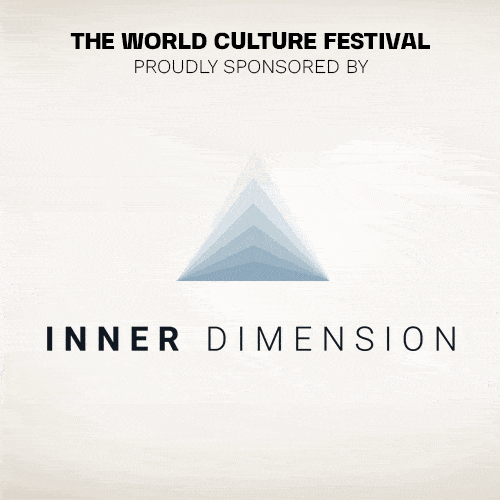So you’re going to the World Culture Festival in Washington, DC! Woo hoo! While you’re in town, you might as well take in some of the sights. DC is the home of many, many museums and attractions. We’ve outlined some of the best places to visit along the National Mall (where it is ALL happening!). Plus, how to get around the greater DC area.
Getting to and from the National Mall
Uber and Lyft may not be able to get you close to the National Mall given the number of visitors for the World Culture Festival (WCF), but MassTransit options will likely be better travel means. Driving into the area and parking will also be challenging. Instead, use the following options to plan your visit during WCF.
D.C. Metrobus (WMATA)
The DC Circulator National Mall route has 15 stops at the major destinations throughout the National Mall (including Metro stops). The service is convenient, low cost ($1), and frequent (every 10 minutes), with stops within walking distance of nearly 30 monuments, memorials, and museums.
Things to do near the National Mall
The National Mall is home to many of America’s most iconic memorials & monuments. These national landmarks showcase the country’s history, as symbols of the people & events that molded the U.S. as a nation. Also referred to as ‘America’s Front Yard,’ here are some of the places to visit near the National Mall.

At the western end of the National Mall stands the iconic Lincoln Memorial. It honors the 16th president of the U.S., Abraham Lincoln. This grand building’s design is inspired by ancient Greek temples. There are 36 columns, one for each state in the Union at the time of President Lincoln’s death. The 19-foot statue of President Lincoln is the focal point. Seated in the interior, it faces the Washington Monument and the Reflecting Pool. The Lincoln Memorial is open 24 hours a day, every day.
Smithsonian National Zoological Park
Commonly known as the National Zoo, it is one of the oldest zoos in the US. Its two campuses are home to more than 2,100 animals representing almost 400 different species. This includes some of the planet’s most critically endangered or threatened species. There is no charge for admission, but entry passes are required for all guests. The zoo is open every day, except Dec 25.
Originally called the National Air Museum when it was formed, visitors here can experience the larger-than-life world of aviation and space travel. The museum’s two buildings contain world-renowned and the largest air and space artifacts. It is a center for research into the history and science of aviation and spaceflight. The museum is open every day except Dec 25, from 10:00 a.m. to 5:30 p.m. It is free to visit, but timed-entry passes are required to visit. The National Air and Space Museum on the National Mall is currently transforming, during which some of its spaces and galleries are closed. The full building is anticipated to be open in 2026.

This National Monument was built to honor George Washington, the first president of the United States. Made of marble, granite, and blue gneiss, this 555-foot obelisk towers over Washington, DC. At the top, from the observation deck, visitors can see for many miles into the horizon in clear weather. The view from the deck includes landmarks like the White House, the U.S. Capitol, the National Cathedral, the Lincoln Memorial, and more. Tickets are required to enter the Washington Monument.
The National Gallery and its attached Sculpture Garden offer a memorable experience. There are more than 150,000 sculptures, decorative arts, prints, drawings, photographs, and paintings in the National Gallery’s permanent collection. And over 3,000 works are on view, with places to learn and unwind. The National Gallery is open daily from 10:00 a.m. to 5:00 p.m. and is closed on Dec 25 and Jan 1. Admission is free. Visitors can explore the collection and exhibitions with audio tours and guides.
Martin Luther King, Jr. Memorial

The site was designed as a lasting tribute to Martin Luther King, Jr.’s legacy and the struggle for freedom, equality, and justice. Dr. King was one of the most prominent leaders in the modern civil rights movement. He was a tireless advocate for racial equality, the working class, and the oppressed around the world. The centerpiece of the Memorial is a 30-foot statue of Dr. King carved into the Stone of Hope, which emerges powerfully from two large boulders, known as the Mountain of Despair. Surrounding the statue of Dr. King is a 450-foot-long Inscription Wall, which features 14 quotes from King’s speeches, sermons, and writings. The Memorial is open 24 hours a day, seven days a week. No entrance fee or pass is required.
Between the Vietnam Memorial and World War II Memorial lie the Constitution Gardens. Dedicated in 1976, the Gardens are a living legacy of the founding of the Republic. The small island in the lake has stones bearing the names and signatures of the 56 men who signed the Declaration of Independence. There is no requirement for an entrance pass to access the Constitution Gardens. They are open 24 hours a day.
African American Civil War Memorial
The Memorial serves as a tribute to the United States Colored Troops. It honors the service and sacrifice of the over 200,000 African-American soldiers and sailors who served in the U.S. Army and Navy during the Civil War. Their service helped to end the war and freed over four million slaves. There is a bronze statue and related museum just across the street. The museum has a rich quantity of artifacts and information on display. Admission to the museum is free.

Also known as the Tulip Library, the NPS Floral Library is a small garden patch planted by the National Park Service that consists mainly of several varieties of tulips, but there are also daffodils and other flowers. With 93 beds – each with a different variety of bright blooms – the library features a variety of lovely flowers that are planted over months. The Floral Library was established in 1969, as a part of First Lady ‘Lady Bird’ Johnson’s Capital Beautification Project. The goal was to make the National Mall more appealing and engaging. It is located next to the Tidal Basin along Independence Avenue.
The Peace Monument, also known as the Naval Monument or Civil War Sailors Monument, stands on the grounds of the U.S. Capitol in Peace Circle at First Street, N.W., and Pennsylvania Avenue, DC. This white marble memorial is 44 feet high.
The Peace Monument was erected in 1877-1878 to commemorate the naval deaths at sea during the American Civil War. Today, it stands as part of a three-part sculptural group.
Safety

WCF is working closely with the National Park Service, including Park Police, and various D.C. agencies to ensure the safety of all participants in addition to providing the required Emergency Medical Service stations and services. Even Homeland Security is on board! Rest assured, festival goers are in good hands!
Did you secure your WCF free pass?
You probably already know that the World Culture Festival features music & dance, art, food, meditations, yoga, inspirational talks, and a commitment to peace. But if you still haven’t gotten your free pass, get them here!



